“You gotta get in to get out…”—Carpet Crawlers, Genesis
Learn to forget. Learn something so you can forget it. Master it. Sounds like a contradiction but it’s not. I started Script Gods not so much to pull down Syd Field as to illuminate him, the bad and the good.
Syd Field didn’t create 3-Act Structure. That was the Greeks. The whole beginning- middle- end thing has held up pretty well through the centuries. I’m aware that his isn’t the only structural system. Christ knows, there are hundreds of books telling of the necessity of organizing your thoughts.
News flash: Screenplays are not novels. While 400 pages is an acceptable length for a novel, so is 800 pages. Most movies weigh in somewhere between 90 and 120 minutes. At the imperfect measure of one page per minute that means your screenplay, ideally, will be somewhere between 90 and 120 pages. Comedy is generally shorter, 90-100 pages being the sweet spot. Sure, Ted was 126 pages but you won’t be doing yourself any favors writing comedies of that length. Drama’s sweet spot is 100-110. Can you go to 120? Sure. You can go to 150, plenty of 2 ½ hour movies…just not spec screenplays that actually get bought.
Enter Syd Field. Million-dollar ideas often dazzle in their simplicity. There is a simple genius in his “paradigm”, adapting the Greek 3-act structure to screenplays. How many books has the guy written? Here’s a sample from Amazon:
Screenplay: The Foundations of Screenwriting by Syd Field
The Screenwriter’s Workbook (Revised Edition) by Syd Field
The Screenwriter’s Problem Solver: How to Recognize, Identify, and Define Screenwriting Problems by Syd Field
Four Screenplays: Studies in the American Screenplay by Syd Field
Selling a Screenplay: The Screenwriter’s Guide to Hollywood by Syd Field
Going to the Movies: A Personal Journey Through Four Decades of Modern Film by Syd Field
Now, go to IMDB and have a look at his writing credits. Never mind, I’ll do it for you:
Writer (3 titles)
2002 Mnemosyne (short) (story concept)
1967 Spree (documentary) (as Sydney Field)
1964-1965 Men in Crisis (TV series)
– Khrushchev vs Nagy (1965) (writer)
– Kefauver vs the Syndicates (1964) (writer)
– MacArthur vs Truman (1964) (writer)
That’s not a piece of his output. That’s all of it. How is it possible for a man to have built a book empire, make millions of dollars, and never actually write a single movie of note?
Simple. He’s not a writer. He’s a guru. Is it possible someone who can’t write can help you write? The obvious answer is yes. You don’t sell millions of books without striking a chord in people.
I am one of those people. Least I was. When I first started it was his book SCREENPLAY that I learned for a structural model. Leave out the mandatory requirement that you must know your ending before you start. Make no mistake–telling us that every other creative process model but yours is invalid is an absurdity. If you want a more organic approach, an approach more akin to playwrights or poets, you might not choose to know every plot twist ahead of time. Maybe you want discoveries along the way, you want your characters to surprise you. Who the hell takes a vacation and plots out every day of the trip, every road that will be taken, every restaurant meal eaten? Many writers might choose to not outline. They needn’t kiss Syd Field’s ring nor bow down to his structural method.
For the rest of us—and yes, I do need to outline—Syd’s paradigm is pretty basic, the key signposts being:
–Page 1-10: FIRST SEQUENCE: Establish the world, the key characters, the tone, beginnings of conflict.
–Page 10-15: INCITING INCIDENT: The event that signals change to the world you just set up.
–Page 25: PLOT POINT 1: Lynch pin scene. Scene that takes you out of the First Act. You know this scene because there is no movie without it.
–Pages 25-50: RISING ACTION: Second act is twice as long as first or third. First half of the second act is a deepening of story and character, deeping of the movie’s theme, moving us toward…
–Page 50: MIDPOINT: A key scene, though not as essential as either Plot Point scene. It approximates the end of rising action, moving the story into descent, placing the protagonist(s) in grave danger, culminating in…
–Page 75: PLOT POINT 2: “All is lost” moment. “Dark night of the soul” etc. Movie and character low points should be end of the second act. This is another lynch pin scene to the essential degree of: There is no movie without it. 100 page model is comes here. If the movie is 120 pages, it would come closer to page 90. Second Act ends here.
–Page 85-90: CLIMAX: Story and character arcs end in an inevitable, plausible manner. Resolution is not required. Happy endings are not required. Character growth is. The thematic journey complete.
Let’s look at how The Matrix breaks down according to the standard Syd Field structure.
- FIRST SEQUENCE
Revolutionary. Can you remember where you where when you saw that first Matrix fight sequence? Saw this on the big screen at now defunct Mcclurg Court in Chicago. Defined the movie, spoke to a world we had never seen before. Here’s the script pages:
EXT. CHASE HOTEL – NIGHT
A black sedan with tinted windows glides in through the police cruisers.
AGENT SMITH and AGENT BROWN get out of the car.
They wear dark suits and sunglasses even at night. They are also always hardwired; small Secret Service earphones in one ear, its cord coiling back into their shirt collars.
AGENT SMITH : Lieutenant, you were given specific orders —
LIEUTENANT: I’m just doing my job. You gimme that Juris-my dick-tion and you can cran it up your ass.
AGENT SMITH: The orders were for your protection.
LIEUTENANT: I think we can handle one little girl. I sent two units. They’re bringing her down now.
AGENT SMITH: No, Lieutenant, your men are dead.
INT. CHASE HOTEL
The Big Cop flicks out his cuffs, the other cops holding a bead. They’ve done this a hundred times, they know they’ve got her, until the Big Cop reaches with the cuff and Trinity moves —
It almost doesn’t register, so smooth and fast, inhumanly fast.
The eye blinks and Trinity’s palm. snaps up and the nose explodes, blood erupting. The cop is dead before he begins to fall.
And Trinity is moving again —
Seizing a wrist, misdirecting a gun, as a startled cop FIRES —
A head explodes.
In blind panic, another airs his gun, the barrel, a fixed black hole —
And FIRES —
Trinity twists out of the way, the bullet missing as she reverses into a roundhouse kick, knocking the gun away.
The cop begins to scream when a jump kick crushes his windpipe, killing the scream as he falls to the ground.
She looks at the four bodies.
- INCITING INCIDENT
Neo is contacted by Trinity and crew. They want to set up a meeting with Morpheus.
NEO: The Matrix. What is the Matrix?
TRINITY: Twelve years ago I met a man, a great man, who said that no one could be told the answer to that question. That they had to see it, to believe it….
There is a hypnotic quality to her voice and Neo feels the words like a drug, seeping into him.
TRINITY: The truth is out there, Neo. It's looking for you and it will find you, if you want it to.
- PLOT POINT 1
Neo meets Morpheus, who makes him an offer:
Outside, the WIND BATTERS a loose PANE of glass.
MORPHEUS: Unfortunately, no one can be told what the Matrix is. You have to see it for yourself.
NEO: How?
MORPHEUS: Hold out your hands.
In Neo's right hand, Morpheus drops a red pill.
MORPHEUS: This is your last chance. After this, there is no going back.
In his left, a blue pill.
MORPHEUS: You take the blue pill and the story ends. You wake in your bed
and you believe whatever you want to believe.
The pills in his open hands are reflected in the glasses.
MORPHEUS: You take the red pill and you stay in Wonderland and I show you how
deep the rabbit-hole goes.
Neo opens his mouth and swallows the red pill. The Cheshire smile returns.
MORPHEUS: Follow me.
If Neo takes the blue pill…there’s no movie! He has to take the red pill. He takes the red pill and we go off into Wonderland. That how you know this is the plot point scene, and that we’re out of the first act. There is no movie without it.
-
PLOT POINT 2
What do you think it is? A scene where there’s no movie without it... I contend that it’s after Cypher’s betrayal, most of the crew is dead, Neo and Trinity back in the ship, injured, beaten down, Morpheus taken by Agents, definitely the low point of the movie. So what does Neo do?
INT. MAIN DECK
Trinity and Neo hang motionless in the suspension unit. Tank is at the operations station.
TANK: Okay. Store's open. What do you need?
TRINITY (V.O.): Guns. Lots of guns.
TANK: Coming right up.
He loads the weapons disk.
INT. CONSTRUCT
Racks of weapons appear and Neo and Trinity arm themselves.
TRINITY: No one has ever done anything like this.
NEO: Yeah?
He snap cocks an Uzi.
NEO: That's why it's going to work.
If they don’t try to rescue Morpheus…there’s no movie! Imagine if they had gotten back to the ship and Neo looks over to Trinity. “You know, Trinity, you’re looking fine tonight in that black latex. You know what…forget Morpheus. He’s going to a better place. Why don't we go grab some fake nachos at that place you like on 9th Avenue, come back here and chill. Morpheus will be fine.” Ah, no. They have to rescue Morpheus. The entire third act is one long action sequence to free him. When they decide to do that, the Second Act is over, the Third begins, leading to…
-
CLIMAX
“Now do you believe, Trinity?” Morpheus is saved. Trinity going down in the helicopter, also saved by Neo. When Neo bitch slaps Agent Smith, a New World Order and two really bad sequels are upon the horizon.
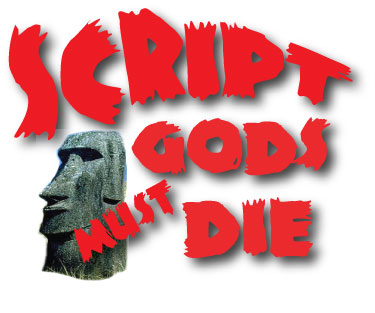

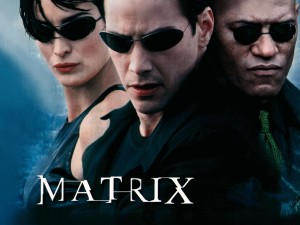
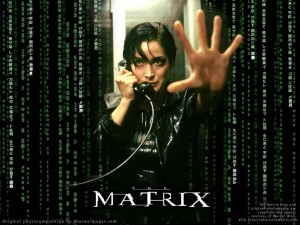
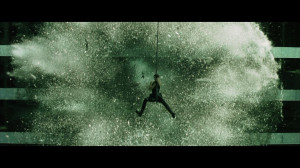
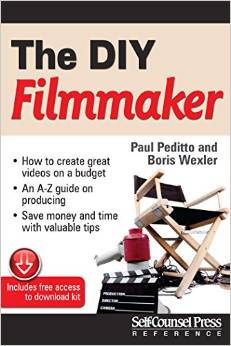
Dear Paul
Your article above refers. I was fascinated by your insight when I started reading your article. The first few sentences: ‘Learn to forget. Sounds like a contradiction but it’s not’, convinced me that you have, on an artistic level, a deep understanding about screenplay structuring. Unfortunately you then proceed to contradict yourself by providing a ‘formula’, so specific that you even provide page numbers where story elements should occur. You make the same mistake as Syd Field (whom I have met and like very much as a person) when you provide a formula. The result of your approach leads the destruction of creative scriptwriting. The three-act structure has, because of nature (birth, life, death for example) value on a psychological level, but then you need to contain yourself dear Paul; ‘learn to forget’ – your words.
Haha…nice call. There’s a very old expression in education: You teach someone something so they can know it,
THEN they can forget it (should they chose to). Therein is the contradiction. I was brought up on the 3-act
structure. I know it well. But I claim the right to DISREGARD it should I need to in telling my story. Hitting
structural marks is such a big business, what with SAVE THE CAT the the SYD FIELD dynasty. Yet many of the great
storytellers would never put those kind of restrictions on their art. And you shouldn’t either. Learn about Syd,
then disregard him, or use his model or SAVE THE CAT. In the final analysis, it’s up to you.